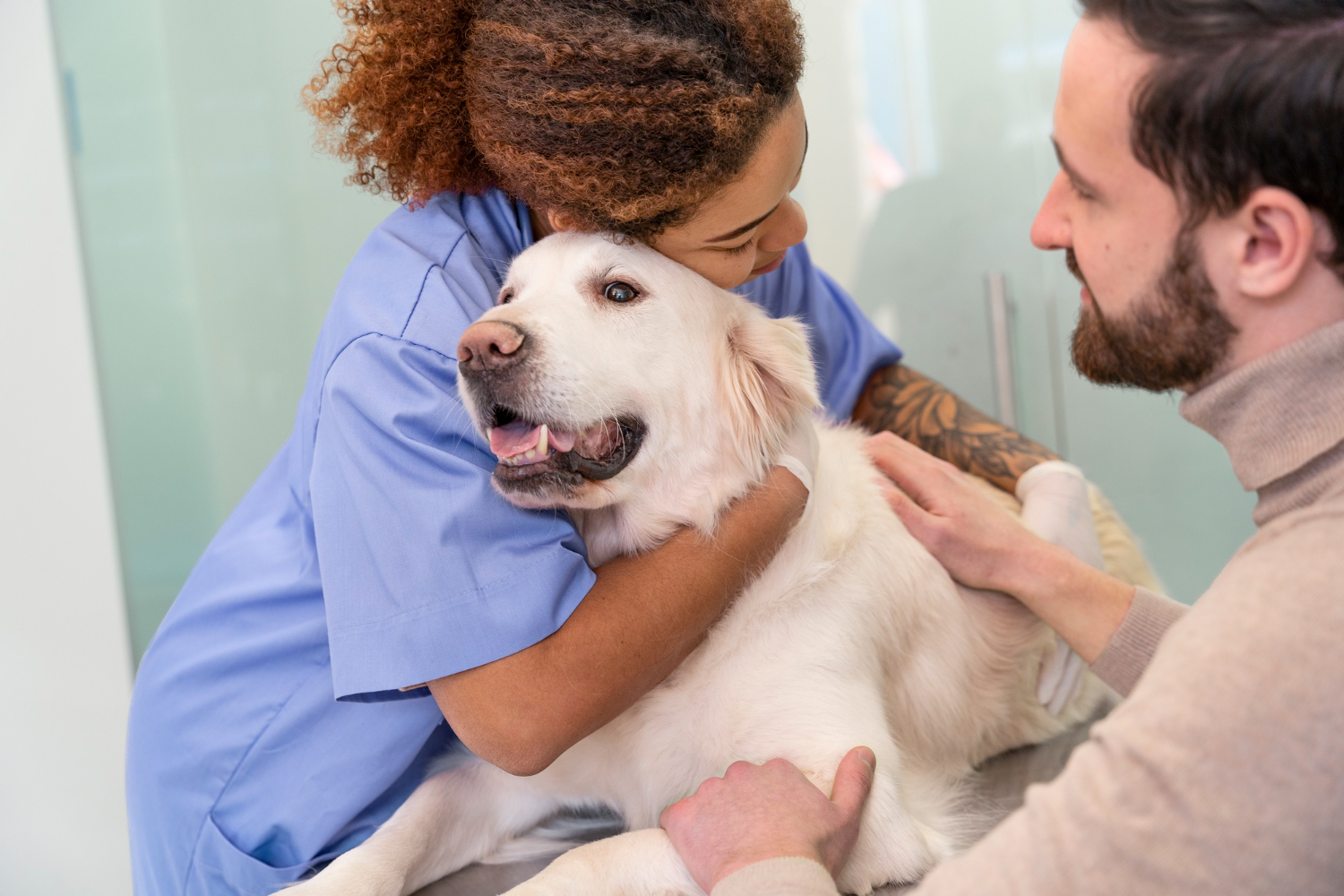Now Offering Urgent Care
Learn More

Pets may not come with instruction manuals, but they do come with lots of questions for pet owners. At Onalaska Animal Hospital, we frequently hear the same questions from caring pet parents. And that’s a good thing: asking questions means you want the best for your furry friend.
Here are the 10 most common questions veterinarians get — and the answers. Because what use is an FAQ without answers?
Healthy adult dogs and cats should come in once a year for a wellness exam. Puppies and kittens may need visits every 3–4 weeks early on, while senior pets often benefit from checkups every six months. These visits usually include a physical exam, vaccines, parasite prevention, and lab tests to catch issues before they become serious.
Dogs — Rabies, distemper, parvo, and adenovirus are considered “core” vaccines. Depending on lifestyle, your dog may also need Bordetella (kennel cough), Lyme, or influenza vaccines. Note that Lyme is strongly recommended in Wisconsin.
Cats — Rabies, panleukopenia, calicivirus, and herpesvirus are core vaccines. Feline leukemia is recommended for all kittens initially, but ongoing boosters depend on lifestyle. For example, cats that go outdoors or live with other cats should get boosters.
Look for food labeled “complete and balanced” by AAFCO (it stands for Association of American Feed Control Officials). It means it meets nutrition standards. Puppies and kittens need diets rich in protein and fat to grow. Adults typically require maintenance diets, while seniors often benefit from formulas with fewer calories and added joint support. The American Veterinary Medical Association and the Centers for Disease Control caution against raw diets due to food safety risk, and most veterinary groups recommend avoiding them.
Dogs — Most need 30–60 minutes daily. Active breeds (like Labs or border collies) may need closer to two hours, while smaller or older dogs may be fine with shorter walks.
Cats — Even indoor cats need two to three short play sessions a day. Feather wands, climbing trees, and food puzzles help keep them fit and entertained.
You should be able to feel — but not see — your pet’s ribs. From above, they should have a waistline that tucks in slightly. More than half of U.S. pets are overweight, which increases the risk of diabetes, arthritis, and heart disease. Use a measuring cup for food and limit extra treats to about 10% of daily calories.
Prevention is key. Dogs and cats should be on monthly flea/tick and heartworm preventives all year long, even in winter. Skipping doses leaves pets at risk for infestations and serious diseases like Lyme or heartworm. Prevention is safe, affordable, and much easier than treatment.
Itching — Often linked to allergies (like pollen, dust, or certain foods), parasites (fleas, mites), or skin infections caused by yeast or bacteria.
Vomiting/diarrhea — A single upset stomach may just mean they ate too fast or snagged something off the floor. But repeated vomiting, watery diarrhea, or any signs of blood can indicate infections, parasites, dietary sensitivities, or even something stuck in the digestive tract.
Acting “off” — Pets sometimes hide illness well. Watch for unusual lethargy, loss of appetite, or withdrawal from family. These can be signs of pain, infection, or underlying health conditions that need attention.
When in doubt, it’s better to call — pets can’t tell us how bad they feel.
Yes! By age three, most pets already have some degree of dental disease. Daily brushing is ideal, but dental chews, rinses, and toys can help. Professional dental cleanings under anesthesia remove plaque and tartar below the gumline, preventing infection and protecting overall health. Many pets benefit from yearly cleanings, but your veterinarian will tailor recommendations.
Spaying prevents uterine infections and greatly reduces the risk of mammary cancer. Neutering can reduce roaming, spraying, and certain cancers. Cats and small dogs are often spayed/neutered at 5–6 months. Large-breed dogs may benefit from waiting until 9–15 months to support healthy joint development.
Pets are considered senior around age seven for dogs (six for larger breeds) and seven to ten for cats. Cats are considered geriatric around ages 11-14. Signs they may need more support include trouble standing, confusion, or loss of appetite. End-of-life care focuses on quality of life — comfort, dignity, and time with the people they love most.
Questions are part of being a great pet parent. And while no blog can cover every detail of your pet’s unique needs, having these basics at your fingertips helps you make confident choices. At Onalaska Animal Hospital, we’re here to guide you every step of the way.